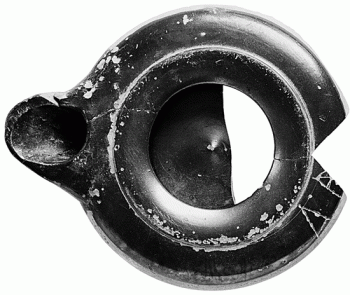American Journal of Archaeology | The Journal of the Archaeological Institute of America
You are here
Marks of State Ownership and the Greek Agora at Corinth
January 2010 (114.1)
Marks of State Ownership and the Greek Agora at Corinth
A long-standing problem in Corinthian studies is the inability to identify the Greek agora with any certainty. The early excavators thought the agora was beneath the Roman forum, but by the 1950s and 1960s, scholars were beginning to doubt this view, since excavations to Greek levels there were not producing the “prerequisite” civic buildings they expected to find in an agora. Moreover, the seemingly irregular layout of the area contradicted their notion of a level and uniform agora. Today these arguments still receive widespread support among specialists, and in reconstructions of Corinth, the agora is usually placed in an unexcavated region of the city. This article looks at the issue from a different perspective. It gathers the objects marked as state property from Corinth—including drinking cups, weights, measures, and counting tables—and argues, based on the findspots of these materials, that the Greek agora was indeed located beneath the Roman forum as originally suggested. Furthermore, it rejects an identification of the Corinthian agora that is based on preconditions or universal models, arguing instead for a more fluid and idiosyncratic interpretation of Greek civic and commercial space. Only by contextualizing the Greek agora within its own urban environment can we begin to understand its spatial elements and acknowledge its inherently diverse role. In this way, the Corinthian story has much to tell us about the Greek agora in general.
Marks of State Ownership and the Greek Agora at Corinth
By Jamieson C. Donati
American Journal of Archaeology Vol. 114, No. 1 (January 2010), pp. 3–26
DOI: 10.3764/aja.114.1.3
© 2010 Archaeological Institute of America


